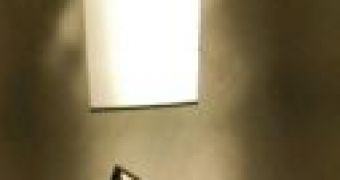Scientists have created the world's first film that has practically no reflection.
This is a breakthrough compared to current nonreflective materials, and the new technology could greatly improve solar cells, empower light-emitting diodes, and boost research in quantum mechanics by imitating a "black body," an object that virtually absorbs all light.
This material is the result of years of investigation for discovering materials that are less reflective. Such materials in solar cells would turn them more effective, absorbing and using more of the energy of the sunlight.
The research team at the Rensselaer Polytechnic Institute in Troy, New York, focused on decreasing a compound's refractive index, which establishes its ability to reflect light. For instance, ice has a refractive index of 1.31, while air's index is 1. The issue was to achieve materials with a high refractive index including when they are arranged in layers thin enough to be used as coatings.
Many materials lose their refractive power when disposed in thin layers. The team of electrical engineers led by E. Fred Schubert tackled the issue by building a new type of highly porous nanomaterials, by depositing silica through evaporation onto a semiconductor. The silica disposes itself into a pattern that turns the material porous, which is penetrated by more light than the traditional antireflective materials.
The silica molecules are disposed at angles that transmit more wavelengths of light than current material, while catching more incident light. The value of the refractive index of 1.05 is the lowest of any thin film measured by now. "This was, so to speak, our dream goal. It allows us to make materials in a range of refractive indices that weren't previously possible", said Schubert.
"The true breakthrough of this material. That's what allows it to capture far more light than traditional coatings is its arrangement as a five-layer sheet", says optical scientist Daniel Poitras of the Institute for Microstructural Sciences in Ontario, Canada. "The new coating reflects no light across much of the visual spectrum, unlike others that work only at a single wavelength", said Schubert. "One concern is fragility. Such a porous material could degrade under certain conditions, such as humidity", said Poitras.

 14 DAY TRIAL //
14 DAY TRIAL //